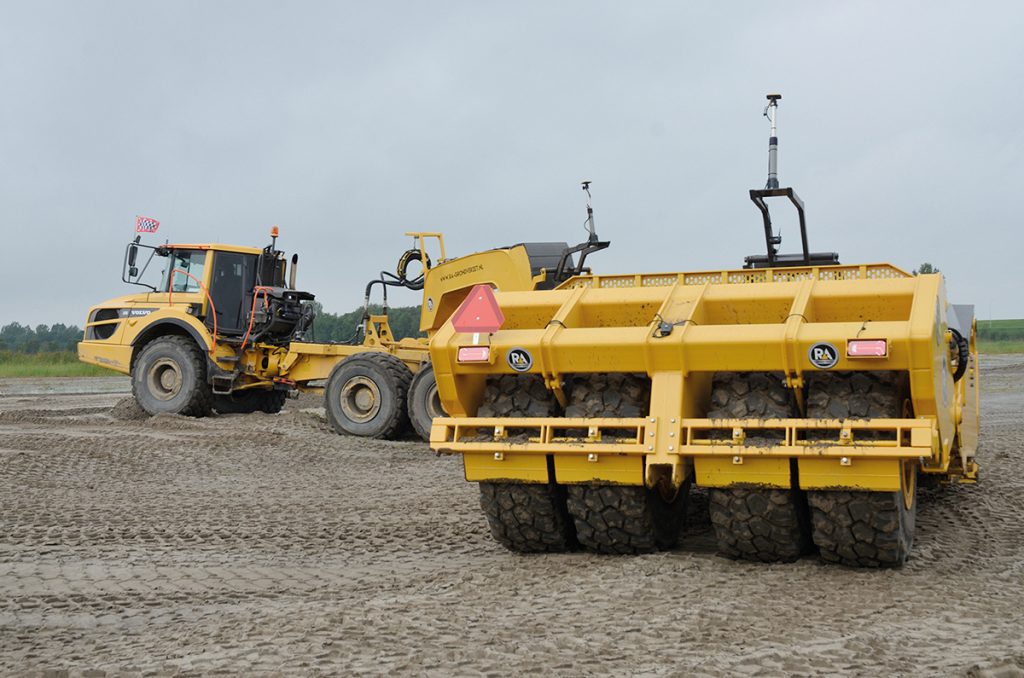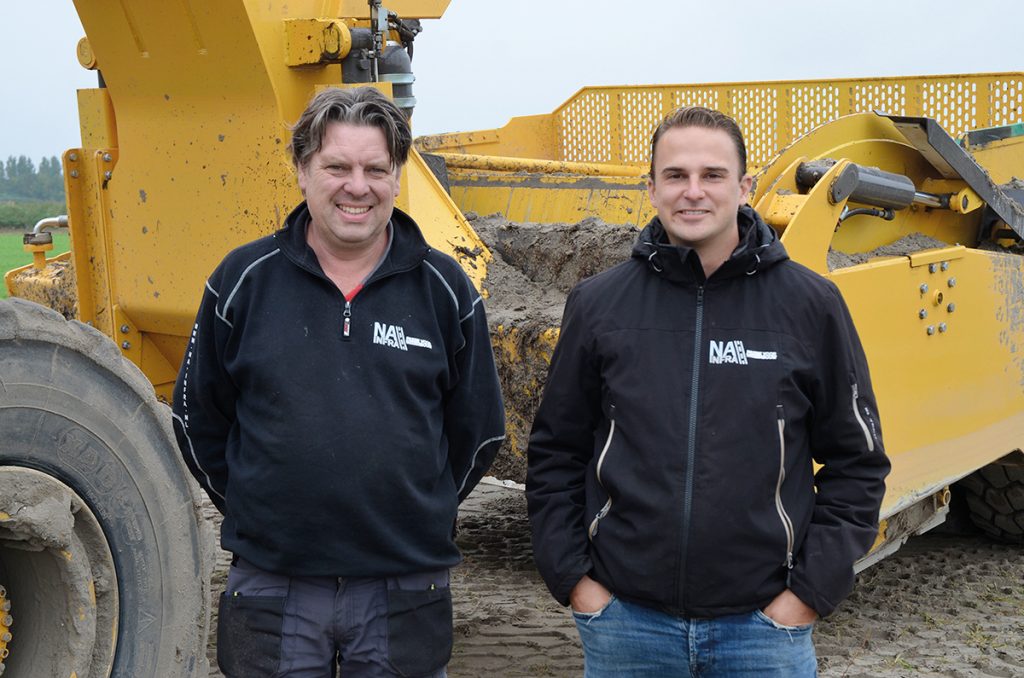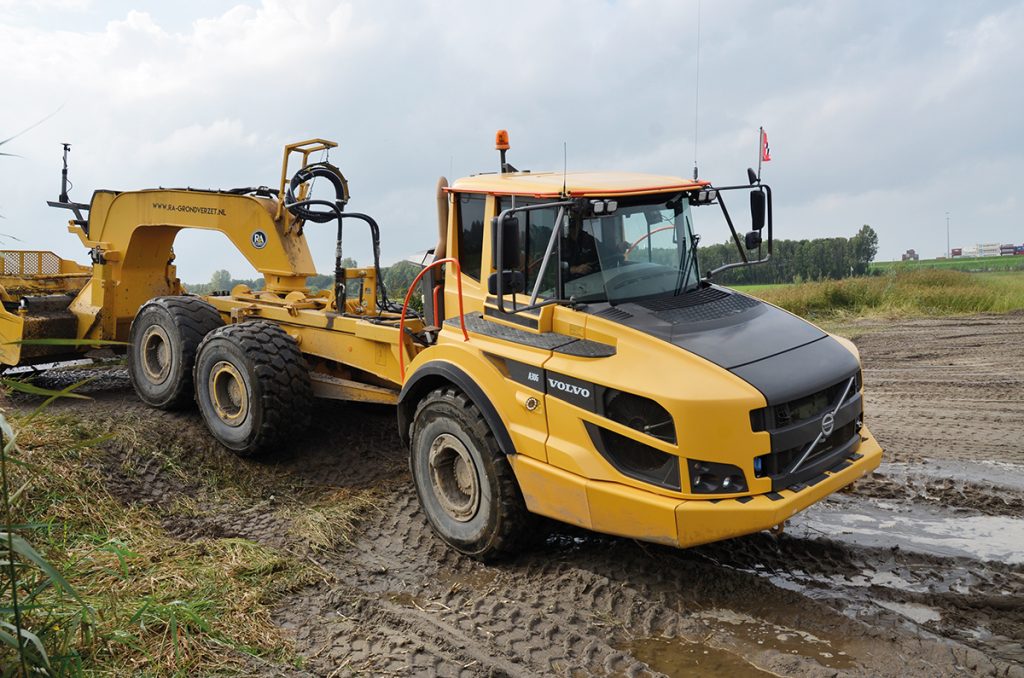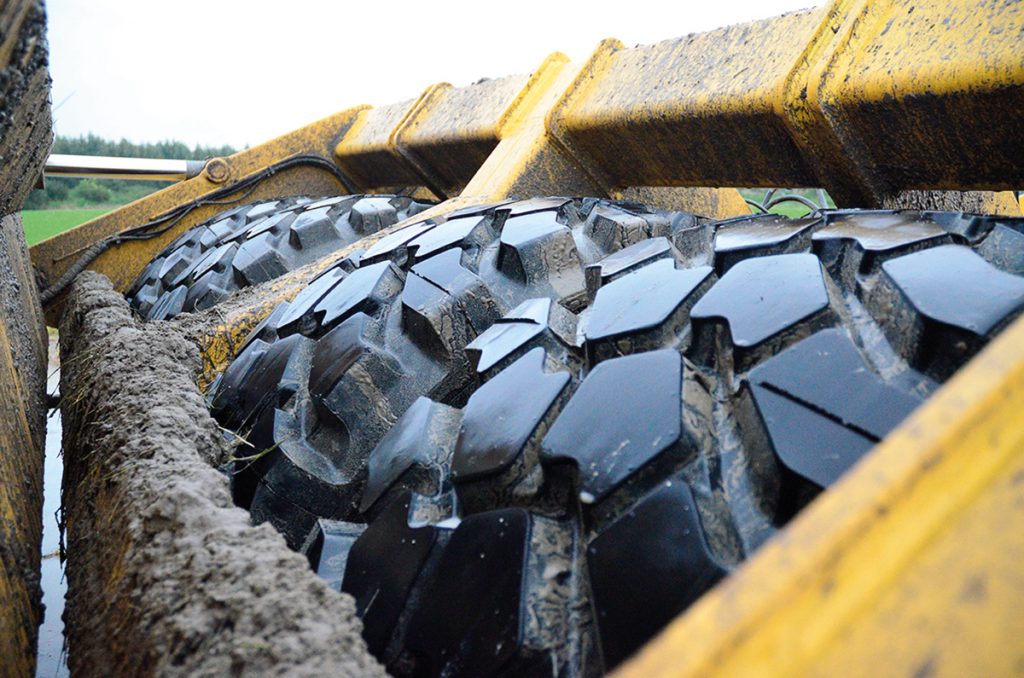![]()
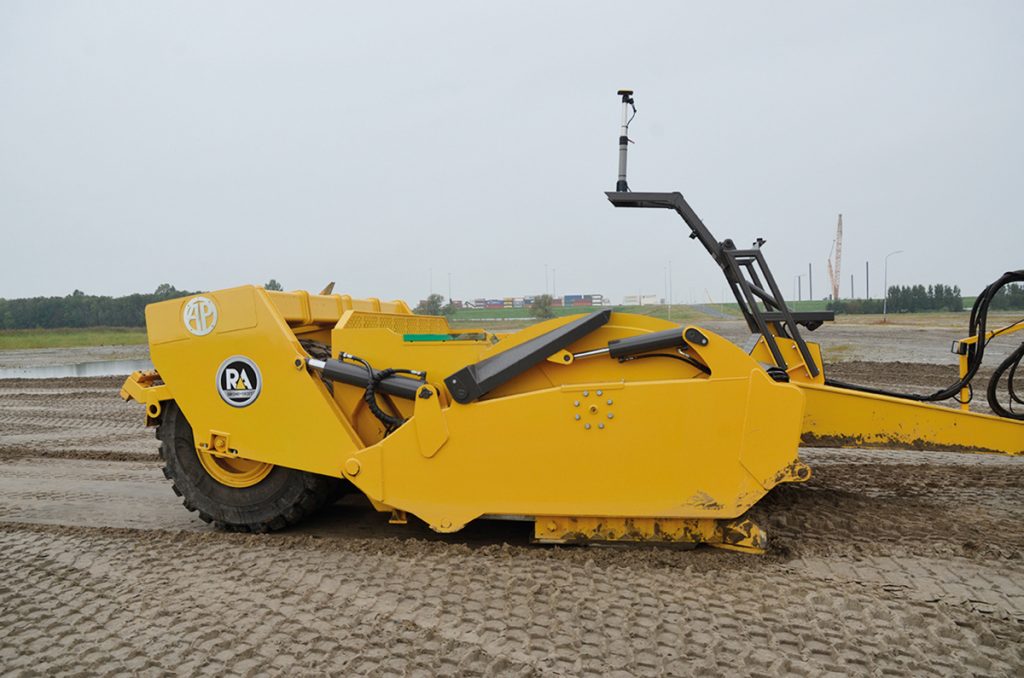
For obvious reasons, the two men want to use the Volvo hauler to tow two scrapers where possible, but it does work equally well with one as I was to find out.
Later that day, material needed shifting to a bund at one end of the site where they was simply no room to turn with two scrapers. Still in its standard 12.5-tonne guise, the second scraper is easily detached.
With the two drawbar locking pins removed, and the securing bar folded forward, Benny climbed back into the cab to raise the wheels of the second scraper and lower the edges of the cutting blade onto blocks.
With the drawbar free, all he had to do then was loosen the hydraulic oil supply and return hoses, and electric, GPS and operation cables. He was on the move again just five minutes later.
Pleased with the performance
The two men really do appear to have thought of everything and we particularly like the way the masts supporting the GPS receivers are lowered hydraulically at the end of the day to allow the operator to safely remove the hardware from the second scraper from ground level.
It is too early to talk about whether the two men’s gamble to invest in a twin-scraper combination was a wise decision, but as Nigel points out, many of his clients are also involved with earthwork projects, like the test location they are currently working at. “The twin-scraper combination is an ideal solution for long distance hauling, reducing muck shifting costs by 20-30%,” he claims.
With more potential scraper work on the horizon at Schiphol airport in Amsterdam, and another possible job in Lelystad, the two men are in upbeat mood and contemplating adding a second combination, possibly as early as next year. Next time they will go for a new Stage V Volvo ADT to reduce emissions still further. “Otherwise there is not a lot we will change. We are really pleased with the performance,” concludes Nigel.
The plan with the current A30G is to run it until 12,000 hours, although Benny has no plans to sell it. “It was my first ADT and when it reaches the threshold I will find another use for it.”
He is toying with the idea of fitting it with a water tank for dust suppression work at construction projects, and when it does eventually reach the end of its working life then it is quite likely it will be parked at the entrance to the yard as a museum piece.



